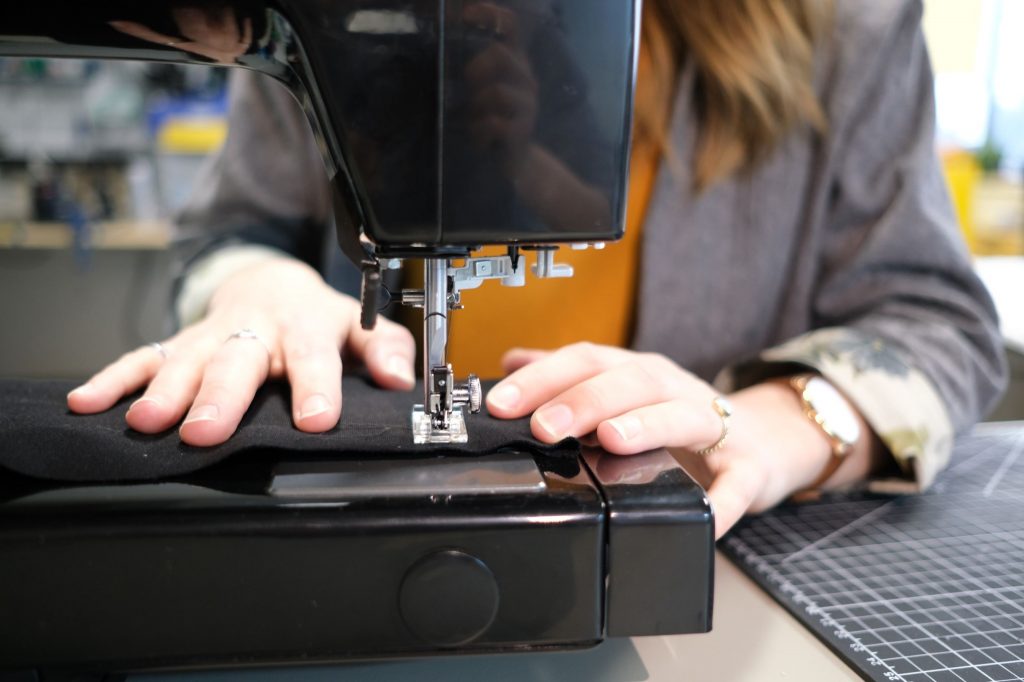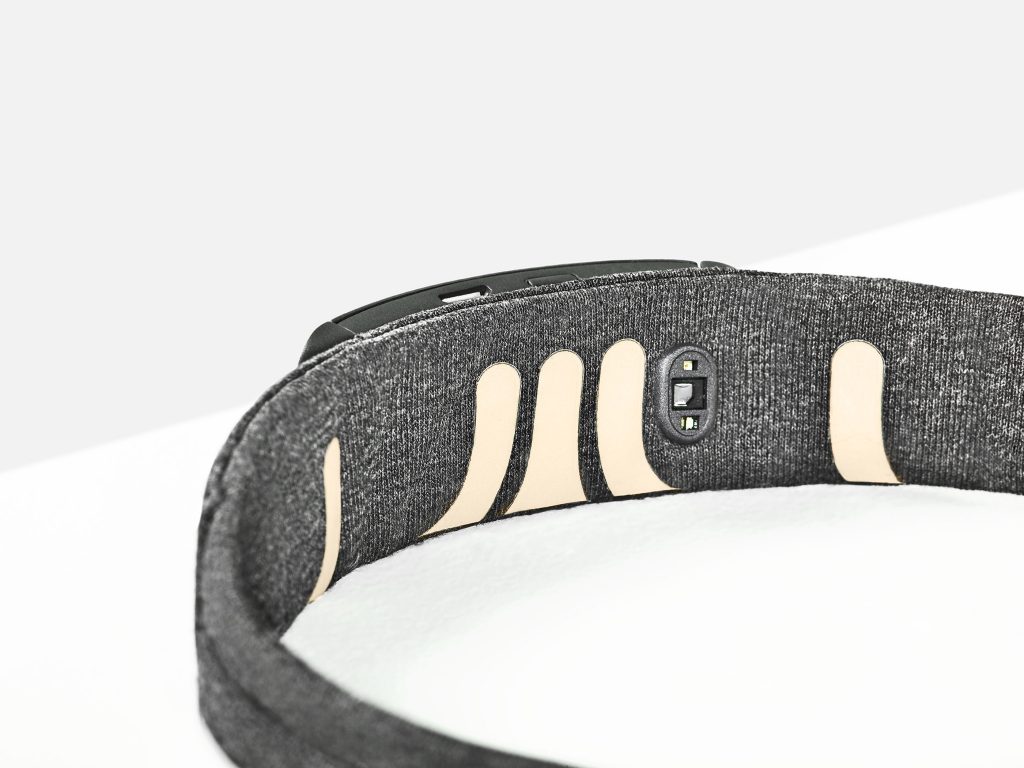Dr. Amanda Fleury took up sewing as a hobby during her undergraduate years, not knowing it would become the common thread that would connect her PhD research to her job prospects. Graduated in 2018 from Dr. Tom Chau’s lab at BME, Amanda spent majority of her PhD researching brain-computer interfaces and various cloth materials that could be applied to commercial products. Now, Amanda is leveraging her biomedical engineering skills to develop wearable technologies for meditation.

What is your role at InteraXon?
I’m the product engineer here at Interaxon. I am responsible for designing a headband for the third generation MUSE product line, which features a wearable soft fabric.
What is the MUSE headband? Which part did you work on?
It records your brain activity and gives you biofeedback during meditation. It provides information on the state of calm or focus in your mind via sensors located on the forehead area. When worn, the electronic components measure brain signals and connects to your phone via a meditation app. With your earbuds you hear the sounds of a soundscape as you’re meditating. The soundscape gets stormy as your mind wanders away, and then gets calmer as your mind comes back to your point of focus. It’s about giving you feedback so you can self-correct.
Main benefit of Muse S over Muse 2 is the soft material form factor, which makes it much more appropriate for sleep and pre-sleep meditations. When I first joined the company, we just started the ideation on this product, and I was responsible for making the textile headband. I believe I made 20 different prototypes to encapsulate different user experiences.

How did you end up at InteraXon?
I did my PhD in Tom Chau’s lab and worked on fabric-based sensors. The research was primarily focused on Brain Computer interfaces and enhancing communication opportunities for kids with disabilities. So it was a natural transition from my PhD to industry.
At Tom’s lab I designed and built wearable solutions to fit a variety of communication needs. I also have an interest in fashion and sewing, so that skill set definitely came to be of help during my PhD. We were asking questions like what would the technology look like? How could we incorporate sensors? What kind of material should we use?
It started out with a year of talking to kids with communication challenges and their parents to gauge the need, and coming up with tailored solutions for individual cases. We got a whole bunch of ideas and I ended up with six years of work that ended up becoming a PhD.

What is the identity of a biomedical engineer?
There’s a huge amount of diversity in the skill set of a biomedical engineer, especially coming out of a program like BME where the research is so broad. With that said it’s really difficult to summarize us with a broad stroke. I originally thought biomedical engineering was mostly prosthetics research, because that was my vision for helping people with disabilities. But at U of T I find that biomechanical engineering is only part of the equation. I think it’s super useful to get that broad perspective and to see what other people in the field are doing.
What advice would you offer students who are transitioning into industry?
A big part is recognizing the value of the skills that you do have and not undervaluing or underselling your graduate degree.
There are two sets of skillsets that I find valuable during transition. There are industry agnostic skills that anyone going for graduate school will get, things that if you hire anyone with a PhD you know that you’re getting, skills like communication more specifically scientific communication. Being able to write papers to communicate experiments and the science that you’ve done. As a PhD student it’s easy to get narrowly focused on your own area of research and not take the blinders off. But working at a company, there’s a lot more sort of cross pollination of ideas. This is where communication becomes extremely important.
Then there are specific scientific and technical skills. For my PhD, I sewed majority of my own sensors and incorporated them into working prototypes. After coming to InteraXon, I hand built 90% of the prototypes for Muse S. That skill set was super important, and having an understanding electronics, such as how to set up a circuit and knowing how to troubleshoot when things went wrong, was also crucial.
*This interview was conducted in March of 2020, prior to the COVID-19 quarantine. Amanda has since moved on from InteraXon and is currently completing a data science fellowship with Insight Data Science. She is looking for opportunities at the intersection of data science and wearable technology.


